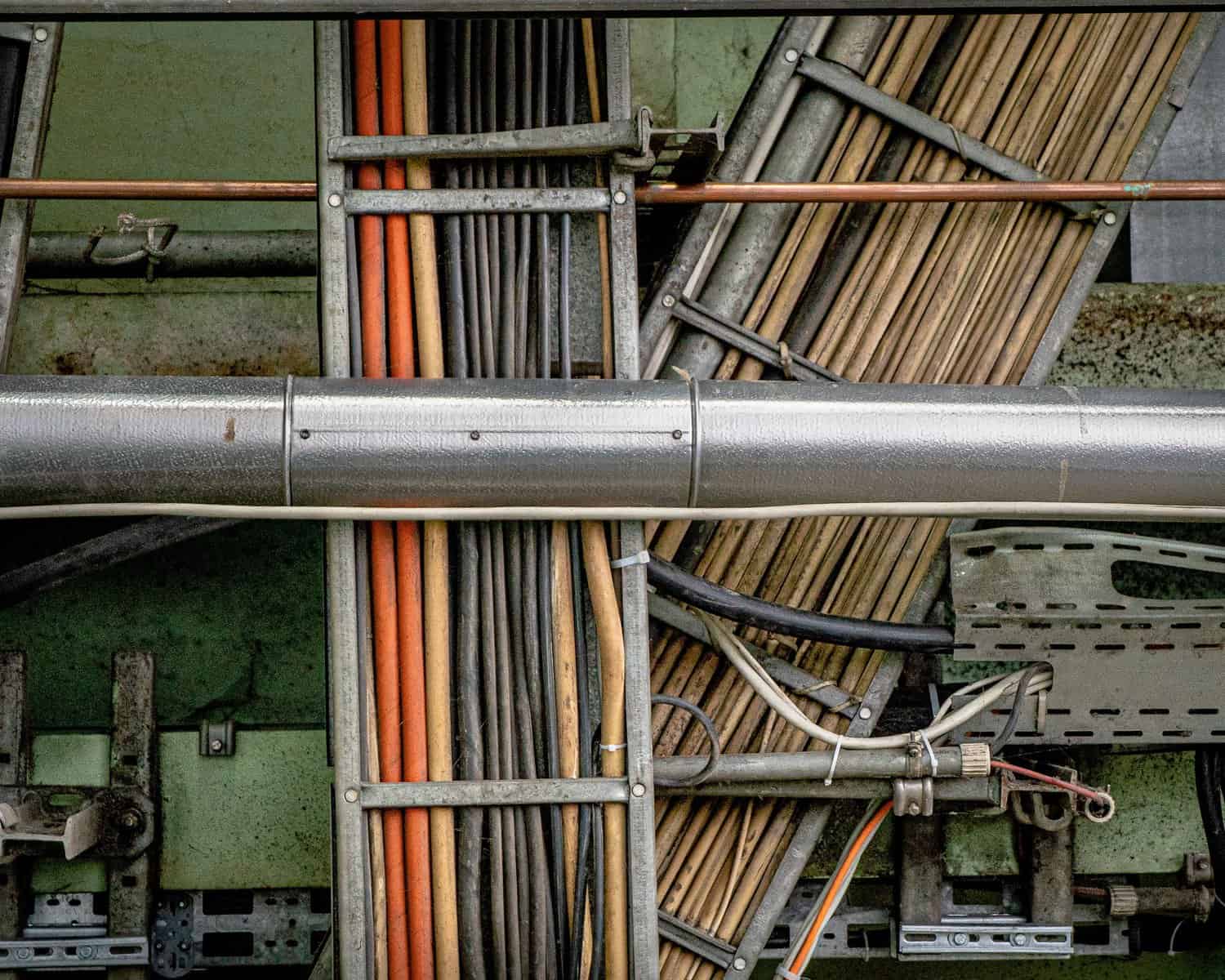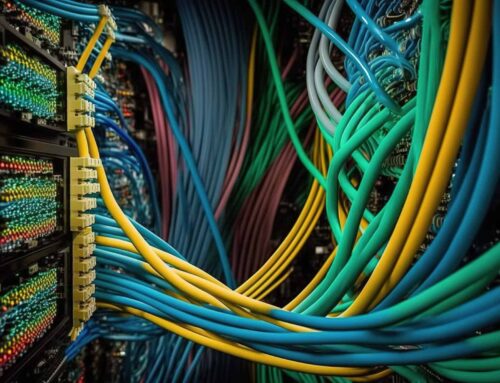5 Signs Your Structured Cabling Needs Upgrading

Although structured cable is an integral part of the modern world, it is a technology with a multi-era legacy. Once upon a time, basic phone cables crisscrossed America, connecting nearly every home and business. Today, it’s high-speed structured cable that ties us together, even cell-phone towers move data across wires into data centers.
Office buildings often host multiple types of structured cable, for good or ill. And these systems eventually demand an upgrade, especially if the existing cable is constrained to slow speeds or outdated tech — a network is only as fast as its slowest link, especially if that link services multiple users.
What Is Structured Cabling?
Structured cabling is used for telecommunications and other applications where signal transmission is the primary purpose. It contains either copper wires twisted together in pairs (and possibly shielded) or fiber optic strands. Fiber optic cables offer the cutting edge of signal transmission performance, it moves information quickly and in the case of multi-mode cable, can handle many concurrent data streams. Alternatively, copper cable, also known as Ethernet, offers moderate speeds and some PoE (power over Ethernet) possibilities. The two types of cable are not compatible unless using signal converters, but one is not necessarily superior — it comes down to identifying your needs and budget.
Signs That You Need A Structured Cabling Upgrade
Once you know what you’re looking for the signs are clear enough. It’s easier to blame your internet service provider (ISP) than to look at your own network infrastructure, but often the problem lies somewhere within your physical domain.
Constantly Requires Repairs
Is your IT team forever troubleshooting connection issues? Do you replace similar parts and cables just to have them fail weeks later? Data transmission may not seem like a mechanical process where moving parts can break, but electrical components do have a finite lifespan. If you’re running into similar issues or repeat failures of the same parts across the network, it is probably a sign that your infrastructure is crumbling and needs a refresh.
Moving Offices
No matter how new a building is, your IT department should evaluate the existing structured cable network and determine if it meets your needs. It’s much easier to upgrade network infrastructure before everyone has settled into their workstations.
Slow Speeds
Are you paying for high, or symmetrical speeds from your ISP and yet nobody ever quite enjoys the performance you’re supposed to get? Check your structured cabling. It’s possible that you’re leaning on outdated equipment, or even equipment that was designed for a different ISP and is incompatible with your current one.
Outdated Tech (Analog Phone System)
As we mentioned previously, the analog phone system was the “data” system of record for virtually every home and office in America. If your office still contains analog phone wiring, then it’s time for an upgrade. Voice over internet protocol (VoIP) is a vastly superior technology that offers myriad benefits that are impossible over analog phone cable.
Need An IP Security System
Thanks to the PoE standard for CAT 6a Ethernet cable, your security and video surveillance equipment can run on a single set of cables and reach places that you may not have thought possible.
You May Only Need To Upgrade Certain Subsystems
If you’re feeling that pain that comes from needing to upgrade your data network infrastructure, then it’s a good idea to evaluate which subsystem of that network are the most in need of help. You may not need to replace every wire, switch, and connection.
Entrance Facilities
Think of this like a synapse in the brain, where two nerves meet up and pass information across. In the case of an office building, the entrance facility is where your ISP or telecom provider connects to your network infrastructure.
Equipment Rooms
Think of server and switching rooms, junctions where various cables branches can be traced back to a main trunk of wires — these are the places where the majority of your data network equipment live.
Backbone Cabling
Backbone cables connect the entrance facilities to the equipment rooms. These are the main cabling trunks for your office or campus.
Horizontal Cabling
These cables are the link between the equipment rooms and the individual users on the floor.
Telecommunications Room
This is often the last stop before the port and terminal connections for individual users — sitting between the backbone cabling and horizontal cabling.
Work Area Components
These are the hardware ports and terminal connections that allow individual users to access the network with their devices. It can include wifi routers that service many users.
Checklist For Upgrading Your Cabling
Here’s a quick list to help you think through your structured cable upgrade before you get in too deep.
Know Your Existing System
Ask yourself what the most important objectives are for your upgrade. Do you need to achieve a certain speed, bandwidth, or accessibility? What is the current network and does it need to be totally revamped or are some of the subsystems good enough for now? How large is your office or campus? How many users does your network need to support (think of this as a high-low range)? Can the building structure support wireless coverage?
Plan Before You Install
It’s best to work with someone who is experienced in structured cabling upgrades. A qualified expert can help you quickly determine the full scope of your infrastructure needs and the scope of the upgrade you’re aiming to complete. This partner should also help you with permitting, site prep, and safety requirements.
Imagine Future Needs
Someday the system your installing will also need to change — all the proof you need is apparent in the fact that you’re performing an upgrade now. Technology systems deteriorate over time, even if it’s just that new system come online and reveal the weaknesses of old systems. Of course the best time to prepare for future needs is when you’re making major changes. Often it’s a balance between leaving enough room for sustainable growth without breaking the budget by installing too much excess capacity.
You’ll Be Glad You Upgraded
It’s difficult to imagine how much better your data network can run using the latest components and tech. But rest assured that you’ll reap a host of benefits, including fewer repairs, less downtime, increased productivity, and happier employees. When done right, upgrading your structure cable can be a decision that rewards you for years to come.
About i.e.Smart Systems
i.e.Smart Systems is a Houston, TX based technology integration partner that specializes in design and installation of audio/visual technology and structured cabling. For more than three decades, our team of in-house experts has partnered with business owners, architectural firms, general contractors, construction managers, real estate developers, and designers in the Houston market, to deliver reliable, scalable solutions that align with their unique goals.




